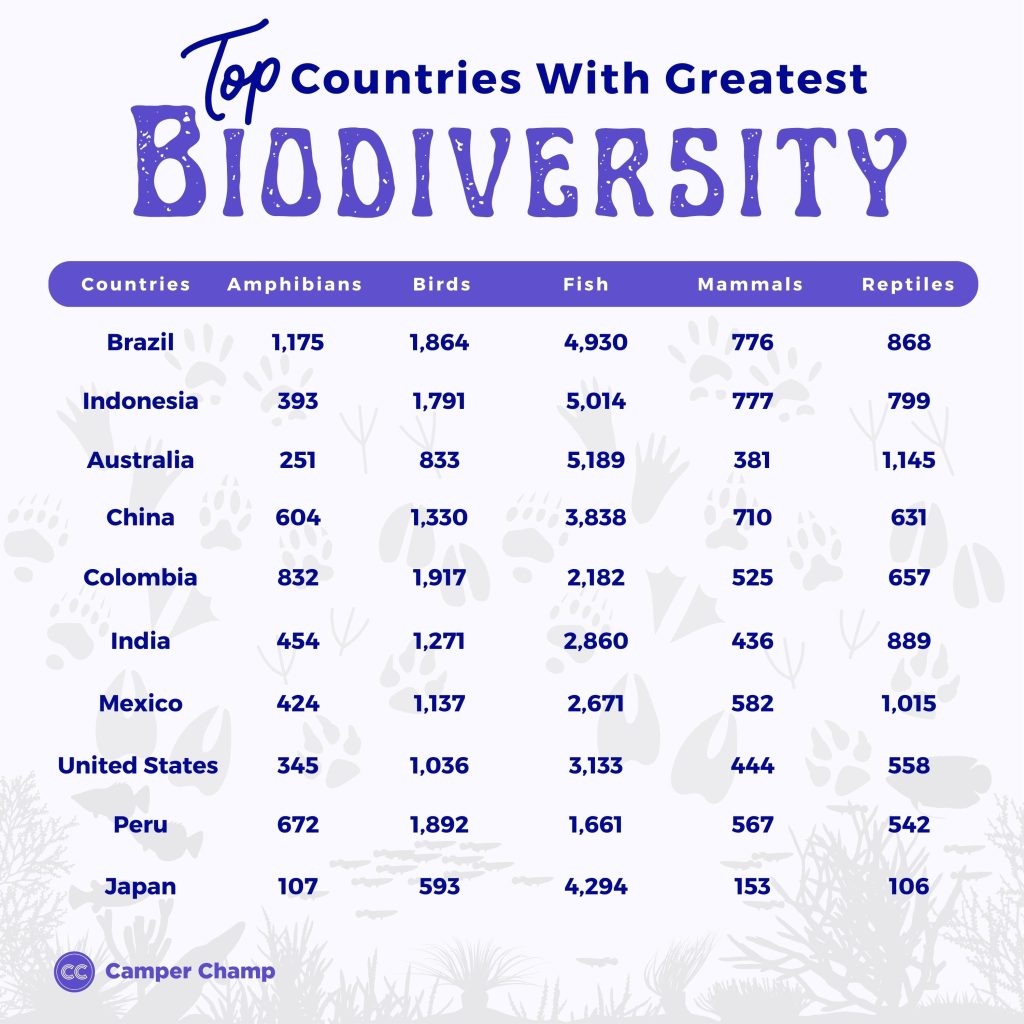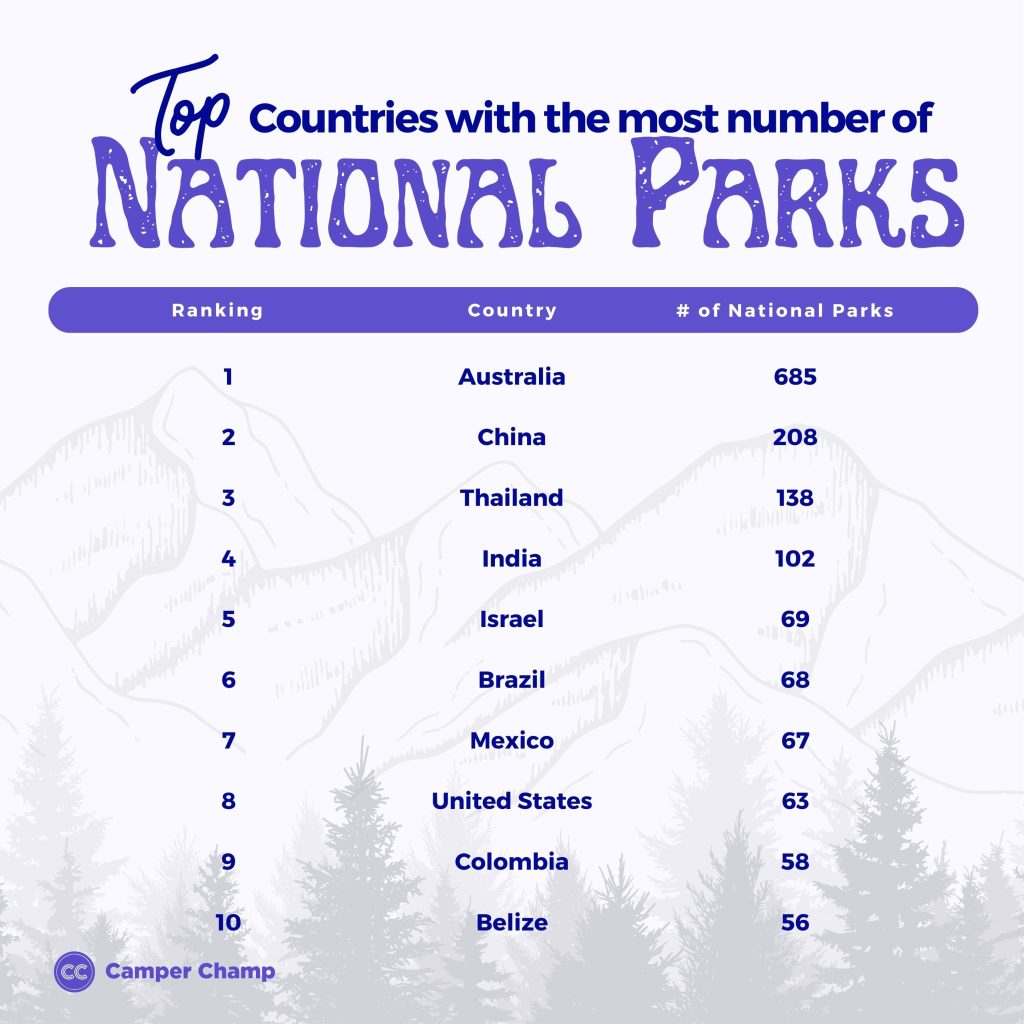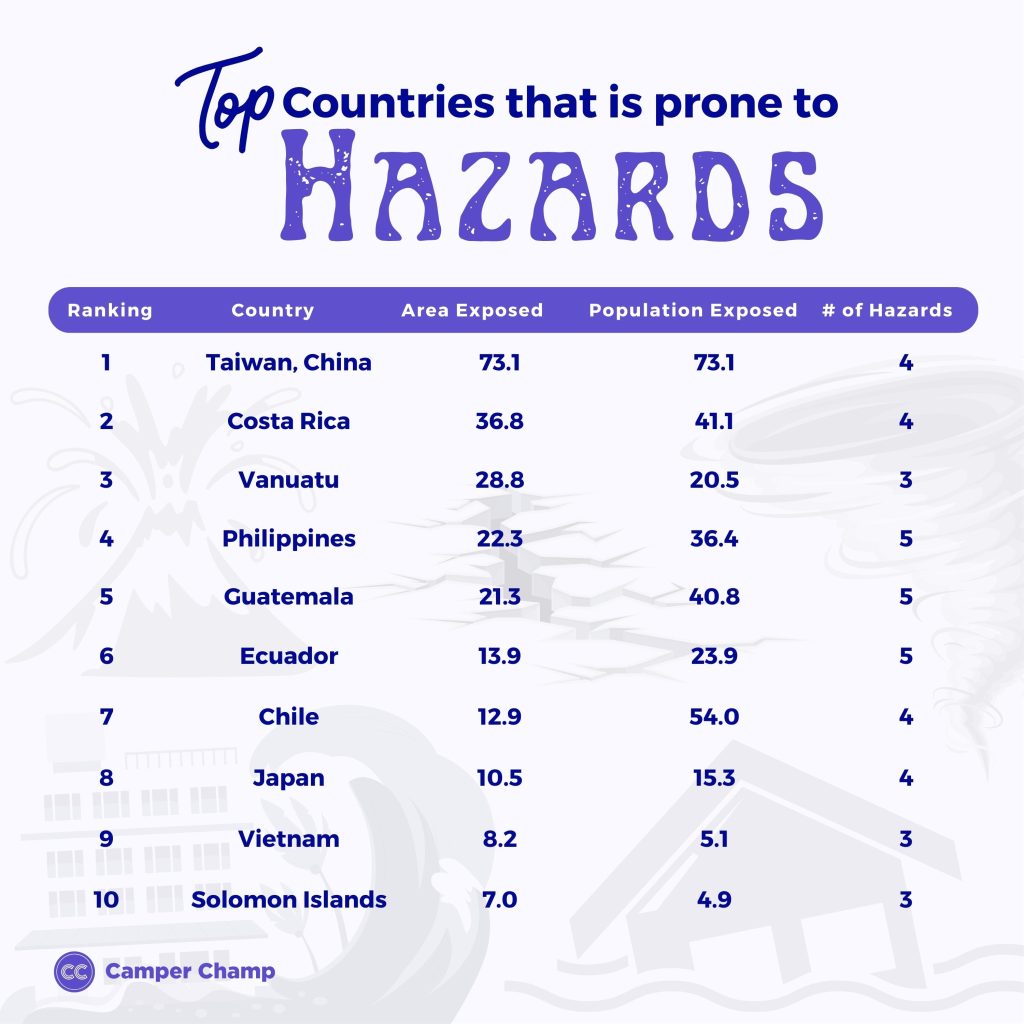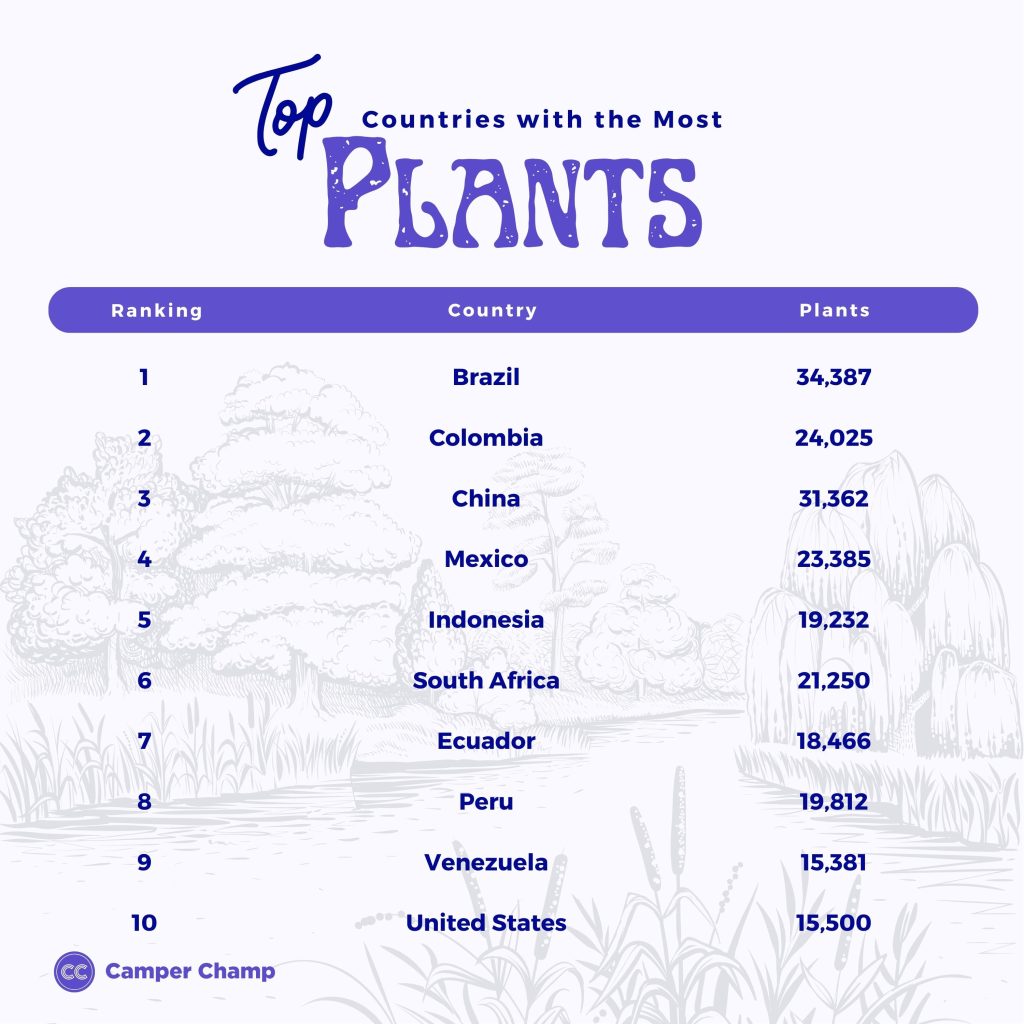Camping has become an increasingly popular trend as people seek outdoor escapes and nature-based experiences for relaxation and adventure.
Worldwide Camping Index
The Worldwide Camping Index ranks the best countries for camping based on factors like:
- Biodiversity & Wildlife: Best countries for rich ecosystems and diverse species.
- Safety from Dangerous Wildlife: Safe destinations with minimal wildlife risks.
- National Parks: Countries with the most and best-managed national parks.
- Forest Coverage: Locations rich in forests and natural landscapes.
- Stargazing: Top places with low light pollution for clear night skies.
- Natural Disaster Safety: Countries least prone to natural disasters.
- Weather Patterns: Destinations with favourable weather for camping.
- Low Population Density: Countries with low population density offer more serene, untouched camping spots.
- Vast Landscapes & Scenic Areas: Largest countries with vast wilderness for adventurous camping.
Where are the most popular places to go camping?
The most popular place to go camping is the United States with an estimated 40 million people campers exploring diverse landscapes each year, including 63 national parks and numerous state parks.
- Canada: Around 8 million people camp annually, drawn by vast wilderness, 48 national parks, and free camping on Crown land.
- Australia: With 7 million people camping annually, offers over 500 national parks and conservation parks with natural scenery that offers organised camping options.

Best Camping Experiences Based on Specific Interests
Biodiversity & Wildlife
What are the top countries with the greatest biodiversity?
- Brazil is known for its rich biodiversity. As of December 2023, Brazil has the highest variety of amphibians (1,175 species), bird population (1,864 species), and a vast range of fish (4,930 species).
- Indonesia also has one of the largest numbers of fish species (5,014) and a high diversity of birds (1,791) and mammals (777).
- Australia‘s variety of reptiles (1,145 species) and fish (5,189 species), along with its amphibians and mammals, makes it an unparalleled destination for those who enjoy the outdoors and wildlife.

Where is the best place to camp for wildlife diversity?
- Brazil stands out as the top camping destination for biodiversity, with 1,175 amphibian species, 1,864 bird species, 4,930 fish species, 776 mammal species, and 868 reptile species, found in habitats such as the Amazon Rainforest and Pantanal wetlands.
Stargazing Opportunities
What are the top countries with the least light pollution?
- Mongolia has the least light pollution with an annual average of 0.006 radiance when dark.
- Tanzania followed closely with 0.022 radiance and Zimbabwe with 0.027 average annual radiance.

Where is the best place to camp with low light pollution for stargazing?
- Mongolia, Tanzania, and Zimbabwe have minimal light pollution but are less suitable for stargazing due to limited facilities and safety concerns.
- Instead, consider Australia’s Warrumbungle National Park, with a radiance rate of 0.656, or Big Bend National Park in Texas, USA, with a radiance rate of 0.709, both offering excellent stargazing conditions.
National Parks
What countries have the most National Parks?
- Australia leads the list with the most number of national parks and protected areas totaling 685.
- Followed by China with over 208 protected areas and national parks, securing second place in terms of conservation spaces.
- Thailand has 138 national parks, offering a wide range of natural areas for exploration.
Learn more about USA National Park here.

Risk of Natural Disasters:
Which countries are most affected by natural disasters?
- Taiwan is the most affected by natural disasters with 73.1% of its total area being exposed to a maximum of 4 hazards.
- Costa Rica with 36.8% of its area and 41.1% of its population exposed to up to 4 hazards.
- The Philippines is also on the list with 22.3% of its area and 36.4% of its population facing exposure to a maximum of 5 hazards, the highest number on the list.
The hazards mentioned above are either earthquakes, volcano eruptions, landslides, floods, drought, and cyclones.

Which countries are the least affected by natural disasters?
- Countries like Qatar, Malta, Barbados, and Singapore have low exposure to natural disasters.
Forest Coverage
What countries offer the most forest land?
- Russia has the largest forest area with 814,848,460 hectares of forest, providing vast and remote areas suitable for wilderness camping.
- Brazil holds 491,570,000 hectares of forest, including the Amazon, offering an expanse for wilderness camping.
- Canada contains 346,975,800 hectares of forest, with diverse landscapes ideal for nature-based camping.

Which country has the largest forests for wilderness camping?
- Russia has the largest forest area in the world, covering 814,848,460 hectares. Its vast, remote forests offer ideal conditions for wilderness camping and outdoor exploration.
Natural Resources
Which countries have the most plants?
- Brazil has the largest number of plant species globally, totalling 34,387, followed by Colombia with 24,025 and China with 31,362 plants.

Weather Patterns
Which countries have minimal rainfall?
- Oman has minimal rainfall totalling 55mm annually.
- Mongolia and Kazakhstan follow with 194 mm and 254 mm of annual precipitation, respectively.

Which countries are the best for camping with minimal rainfall?
- While Oman experiences minimal rainfall, averaging just 55 mm annually, it’s not an ideal choice for camping due to its extreme heat and other environmental factors.
- Spain, particularly the Almeria region, is a fantastic option. With an annual precipitation of 551 mm, it offers a dry and comfortable climate that’s perfect for camping.
Camping Statistics by Country
- Camping Statistics in the USA
- Camping Statistics in Canada
- Camping Statistics in Europe & the UK
- Camping Statistics in Australia
- Camping Trends
